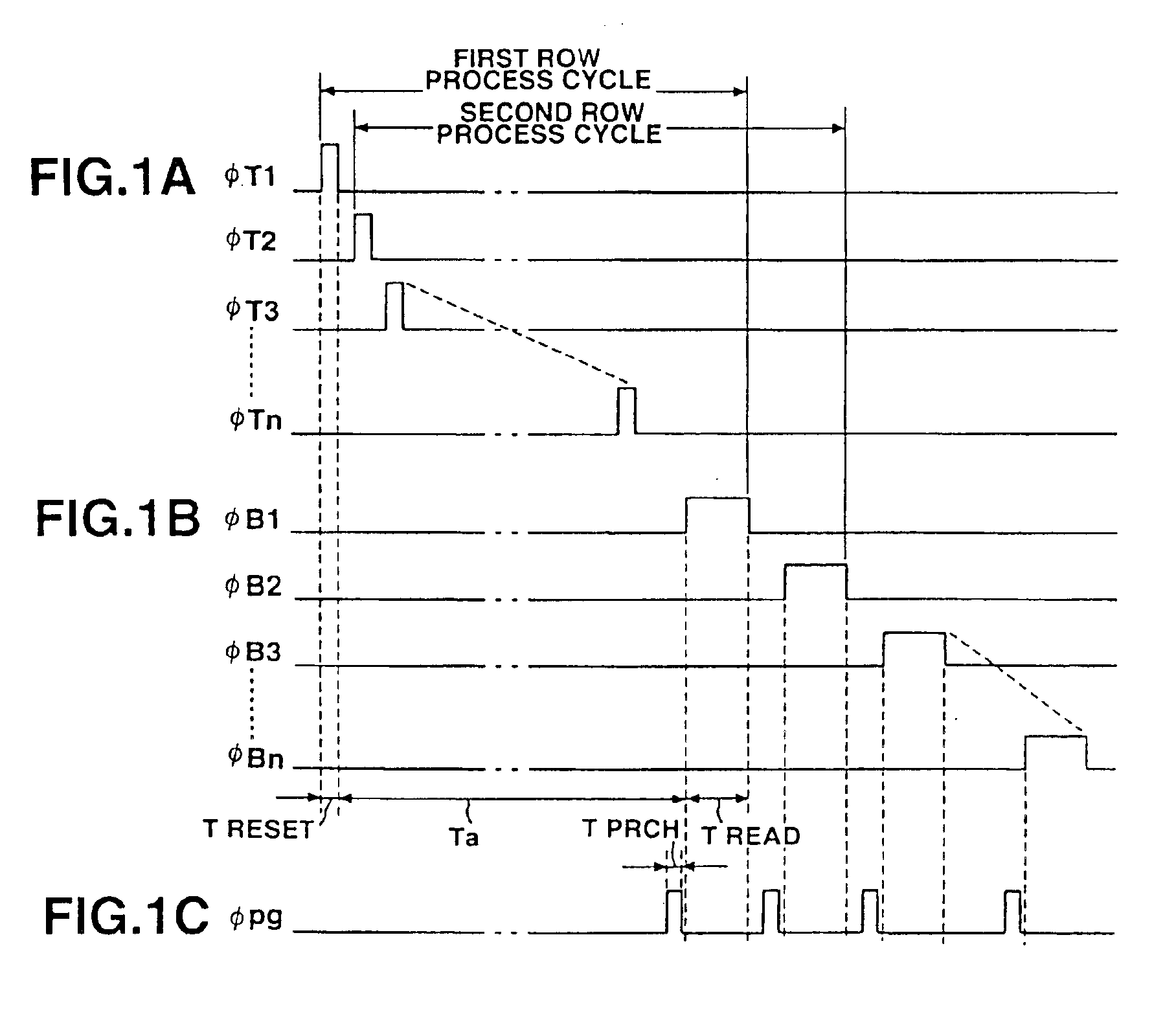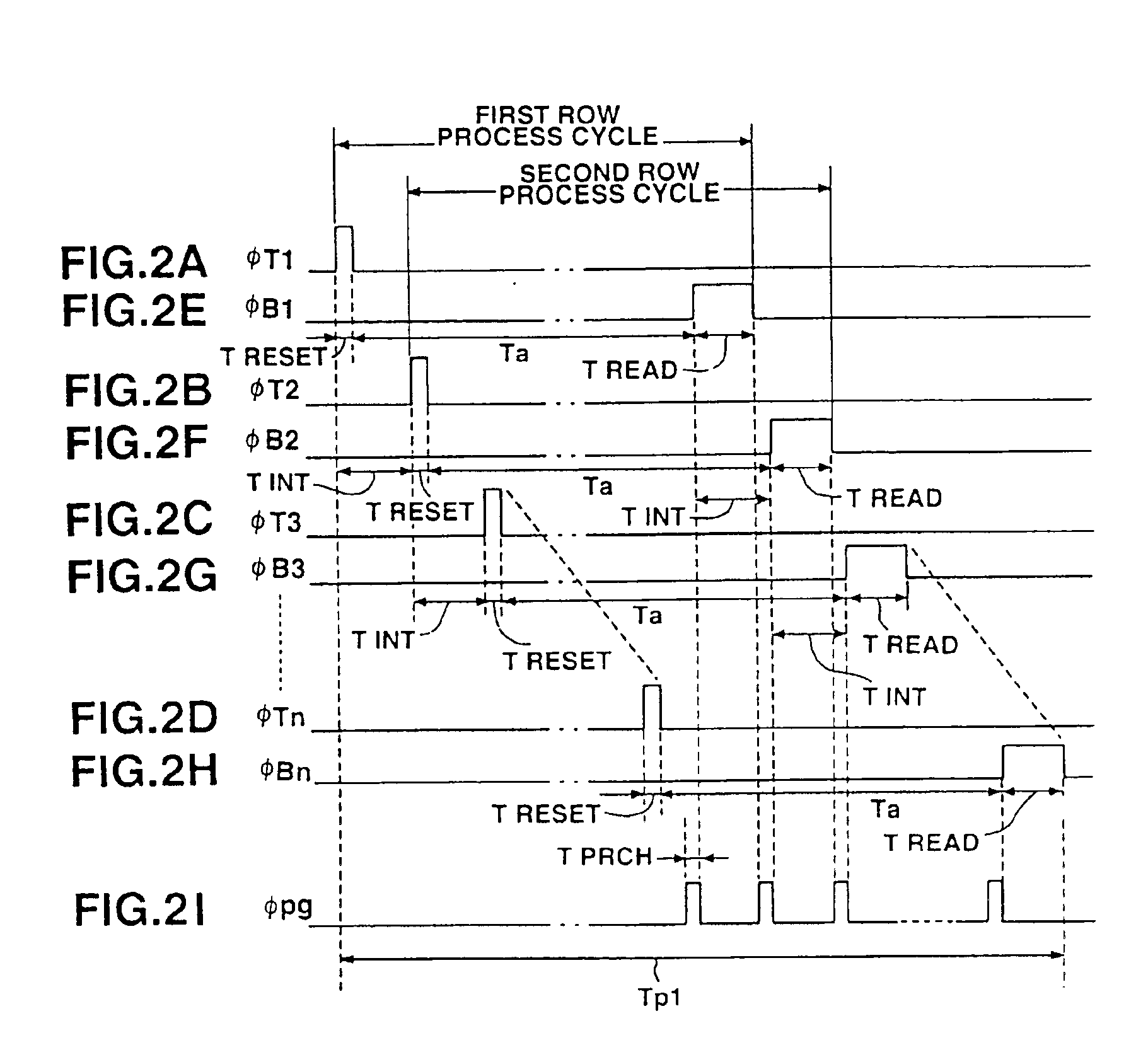Drive control method for photosensor system
a technology of photosensors and control methods, which is applied in the direction of color television, television systems, and scanning details of the system, can solve the problems of inability to start the read operation of the subject image promptly with an appropriate sensitivity, and the practicability of the photosensor array is very limited, so as to shorten the time required for the read operation
- Summary
- Abstract
- Description
- Claims
- Application Information
AI Technical Summary
Benefits of technology
Problems solved by technology
Method used
Image
Examples
second embodiment
The second embodiment produces an advantage over the first embodiment as described below. Specifically, in the first embodiment, the interval among the reset pulse, the read pulse and the pre-charge pulse is set at the first pulse interval Tint, which is equal to the sum of the read period Tread and the pre-charge period Tprch, so as to prevent the read period for each row and the pre-charge period from overlapping in time with each other. However, if the charge accumulating period Ta is shortened so as to start the reading operation before completion of the reset operation for all the rows, it is possible for the reset period Treset for each row to overlap in time with the pre-charge period Tprch or with the read period Tread, making it impossible to perform reading accurately. Therefore, in the first embodiment, it is necessary to start the pre-charge operation and the read operation after completion of the reset operation for all the rows. This brings about a problem that it is i...
third embodiment
The third embodiment is directed to a drive control method in the processing (preparatory processing) for obtaining an optimum sensitivity set value that is changed in accordance with various conditions such as the brightness in the environment and the kind of the subject to be detected prior to the read operation (scanning operation) of the subject described in conjunction with the first and second embodiments of the present invention.
In the drive control method for the preparatory read processing according to the third embodiment of the present invention, the reset pulses φT1, φT2, φTn−1, φTn shown in FIGS. 4A to 4D are applied simultaneously to the top gate line 101 connecting the top gate terminals TG of the double gate type photosensors 10 in a row direction so as to initialize the double gate type photosensors 10 in all the rows.
These reset pulses φT1, φT2, . . . φTn−1, φTn are caused to simultaneously fall down to the lower level so as to terminate the reset period Treset. As...
fourth embodiment
The fourth embodiment is directed to a drive control method in the preparatory processing like the third embodiment.
In the drive control method for the preparatory read processing according to the fourth embodiment of the present invention, the reset pulses φT1, φT2, φTn−1, φTn shown in FIGS. 5A to 5D are successively applied to the double gate type photosensors 10 through the top gate line 101 connecting the top gate terminals GT in the row direction starting with the first row at the second pulse interval Tdelay shown in formula (5) so as to start the reset period Treset and, thus, to initialize the double gate type photosensors 10 for each row.
When each of the reset pulses φT1, φT2, φTn−1, φTn falls down to the lower level so as to terminate the reset period Treset, the charge accumulating period Ta is started. As a result, charge (hole) is accumulated in the channel region in accordance with the amount of light incident from the top gate electrode side of the double gate type ph...
PUM
 Login to View More
Login to View More Abstract
Description
Claims
Application Information
 Login to View More
Login to View More - R&D
- Intellectual Property
- Life Sciences
- Materials
- Tech Scout
- Unparalleled Data Quality
- Higher Quality Content
- 60% Fewer Hallucinations
Browse by: Latest US Patents, China's latest patents, Technical Efficacy Thesaurus, Application Domain, Technology Topic, Popular Technical Reports.
© 2025 PatSnap. All rights reserved.Legal|Privacy policy|Modern Slavery Act Transparency Statement|Sitemap|About US| Contact US: help@patsnap.com



